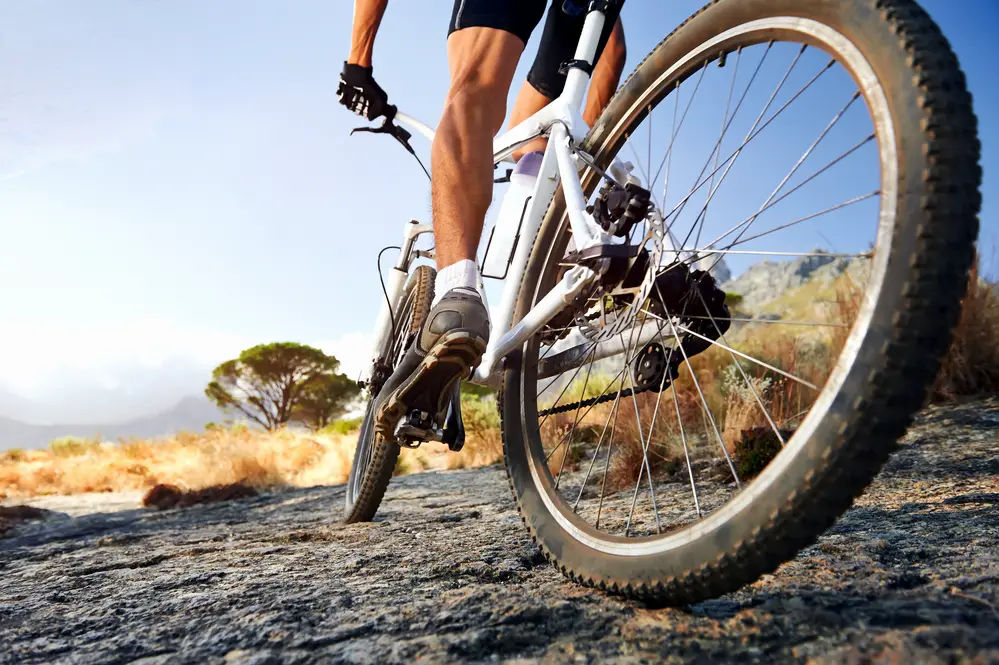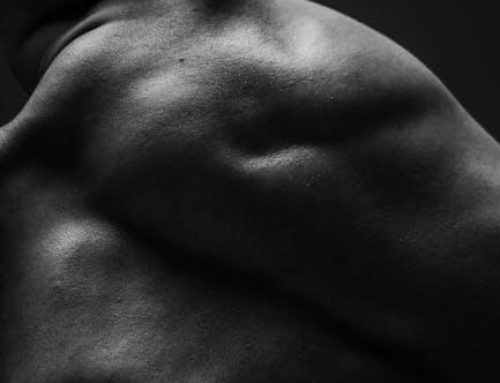Cycling is one of the best physical exercises when it comes to revitalizing your health and wellness. It tones the whole body (from muscles to joints), and also relieves stress. Like weight lifting; following the recommended guidelines is imperative to avoid injuries.
In this article, we’ll look at common setup mistakes and discuss how you can prevent injury while riding.
Contents
1. Wrong Saddle Position
An incorrect saddle height will result in biomechanics issues that increase your risk of injury (especially your Achilles tendons or patellar). As you cycle, you’ll exert unnecessary pressure on your ankles and knees.
If you cycle for long distances in the wrong saddle position, you will end up with sore ankles, and you may not even be able to walk correctly. Experts recommend adjusting the saddle height before you start to train.
Ideally, your leg should be straight when your heel is in a resting position on the pedal (at the bottom of the stroke). While you’re at it, you’ll also want to consider how far back or forward the saddle is on the rails. If it’s too far, you should look to reduce the distance to avoid knee injuries. If too close, you’ll want to change the settings to avoid hip injuries.
2. Neglecting Core Lower Back Muscles
After cycling consistently for a long stretch, sometimes it can be tempting to slack off a bit on occasion. It’s always important to resist the urge to steer away from your recommended workout regime. If not, your lower back muscles or core muscles will be the first to lose their strength.
If that happens, the resulting pain can make it challenging to regroup and get back into your routine. Over the years, we have met many cyclers who actually had to take long breaks from the sport just to make a full recovery (due to painful lower back muscles).
Note: If you are someone who is dealing with this hip problem for quite some time now, maybe it’s a sign for you to go seek medical help. Do not neglect that you might need a small surgery. Fortunately, there’s no need to be intimidated by the idea of surgery. There are hip surgeries in Singapore that have gone smoothly, and the patient has recovered quickly because they chose the right surgeon.
One way to prevent this problem is by targeting cycling routines that tone and strengthen the core muscles. Toning this group of muscles will make your cycling sessions more rewarding by ensuring you stay balanced on your preferred affordable gravel bikes.
If not balanced, the lower back will have to bear the total weight of your upper body, especially when cycling on uneven terrain trails.
3. Neck Pain and Injuries
Neck pain is often a result of a slouching neck position when riding. This incorrect riding position exerts tension on your shoulders and muscles. Maintaining the same head position in a long-distance cycling session also contributes to this problem.
From personal experience, maintaining an upright position when riding is one of the surest ways of preventing debilitating neck pain. Depending on how you set the saddle, you may have to lower it further or push it forward to get into the right position.
Don’t shy away from seeking help from a professional if you are unsure of how to go about the process of adjusting the bike seat and saddle.
Another way of preventing neck pain and injury is by being more relaxed and holding the handlebars less tensely. Relaxing will also enable you to enjoy the activity more (win-win!). Sure, it may not be easy to relax when cycling on a rough trail, but with experience, you will soon get the hang of it and let loose like a professional.
4. Grazes and Cuts
Even world-record holders and other professional cyclers used to fall off the bike during practice or even in competitions. If the road is gravelly or uneven, it’s inevitable to get cuts and grazes, especially on the hands, legs, and shoulders.
Falling is part of the learning process. Protect yourself from the two by wearing adequate protective clothing. There are plenty of stores online that sell cycling shorts and short-sleeved tops. This outfit is perfect for speed and reduces wind resistance when cycling down a highway.
The shoulders tend to be the most susceptible to abrasions. We recommend wearing a quality thin undervest under your jersey to reduce grazing if you fall.
Skidding on a tarmac road typically results in significant road rashes. Be sure to clean the wounds with the recommended disinfectant to prevent infections. More importantly, listen to your body and obey the signs it gives you. If you feel tired or distracted, consider skipping the day to minimize the risk of injury.
5. Saddle Sores
We get it; you want to climb up the ladder and be recognized as a professional rider in your area. However, you should never compromise on your health. Hours of biking increases the risk of suffering from a saddle sore.
This injury is characterized by patches of constantly irritating skin that make it difficult for you to ride comfortably. It often affects the buttocks and should not be ignored. If you do so, the sore will become worse to the extent that eventually you won’t be able to even sit on the saddle.
The solution to this problem is giving yourself a break for several days to allow the muscles, joints, and other body parts to rejuvenate. As you recover, make sure you drink plenty of water to stay hydrated and stick to a healthy diet plan.
Another way of preventing a saddle sore is by ensuring that your cycling shorts fit you well. The best cycling shorts have a comfortable, padded bottom. Use chamois cream and make sure that the saddle matches your body shape.
6. Painful Limbs
Pain on the limbs, such as the wrist, results from holding the bike handles at an unnatural angle for too long. You may also suffer from carpal tunnel syndrome, whose symptoms include tingling thumb and fingers.
Reduce the amount of pressure exerted on your hands and wrist when cycling by rotating the handlebars slightly upwards. That simple adjustment will ensure that your forearms don’t overreach. Go the extra mile and purchase quality cycling gloves with special padding to reduce the amount of pressure exerted on your fingers as you ride.
7. Head Injuries
A recent study showed that young cyclers wear a helmet 15% – 25% of the time. Yet, a rider who decides not to wear a helmet is 14x more likely to suffer from head injuries if they fall off the bike than someone who wears it.
It’s crucial to always wear your helmet when going outdoors to the trails to reduce the risk of injury.
Final Thoughts
Stay safe by adhering to the above tips to benefit from this full-body, physical exercise. Study the trail you’re about to ride in order to avoid surprises, especially if you intend to compete with other cyclers. Finally, check the condition of all your mechanical components and only buy affordable gravel bikes from accredited stores to get the best value for your money.








Leave A Comment